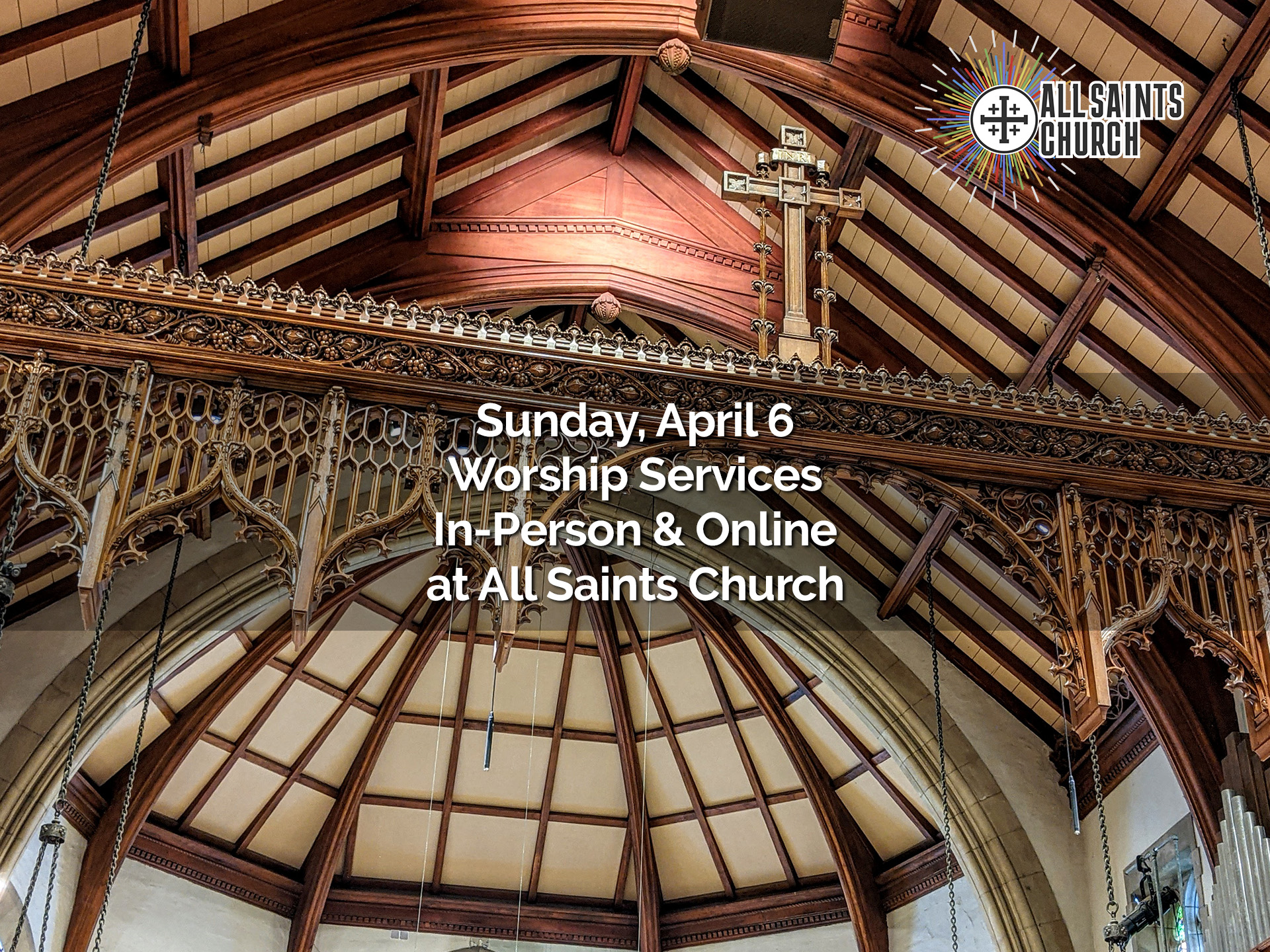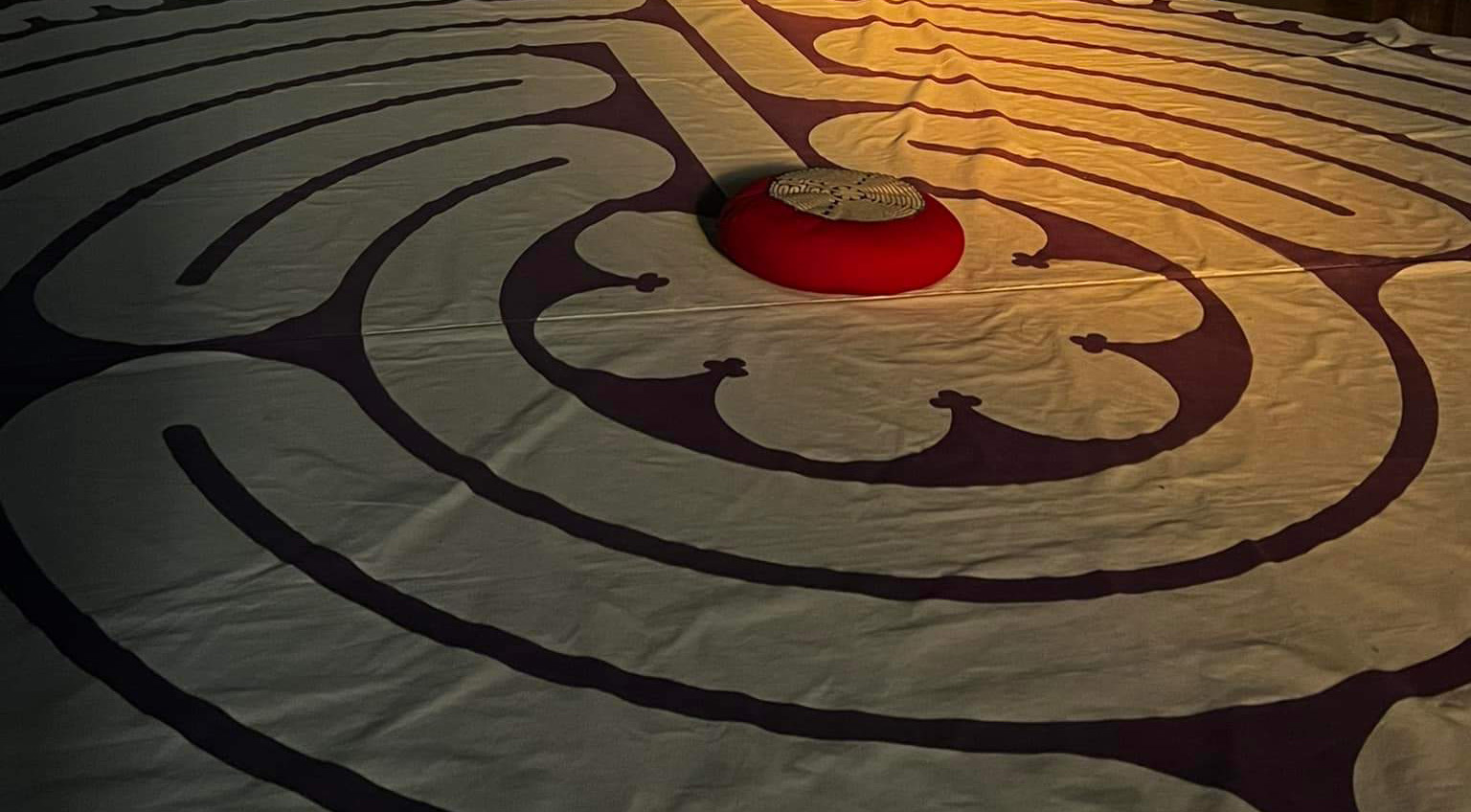On this “hinge day” in Holy Week — after Jesus is laid in the tomb on Good Friday and before the first fire of Easter is kindled for the Great Vigil — this teaching from Bishop Mary Glasspool offers a powerful reflection on what the “he descended into hell” part of the Creed has to say on this Holy Saturday about our mission as the Church the other 364 days of the year. Shared in gratitude and with her permission.
There is a little-known and not terribly popular concept in the Christian Tradition known as Christ’s harrowing of hell that is particularly associated with today, Saturday, the day between Good Friday and Easter Sunday. It is referred to in a single line of the Apostles’ Creed – that after Jesus had “suffered under Pontius Pilate, was crucified, dead, and buried. He descended into hell.” (Rite I) The Creed being a kind of “Cliff Notes” of Christianity, it doesn’t say anything more than that, so we need to look elsewhere for understanding.
When we begin to think about the harrowing of hell, it’s helpful to know that a harrow is an agricultural implement. Like a giant rake, with huge teeth in it, a harrow is drawn over plowed land to level it and break up the clods of earth. So when we use the word harrow as a verb, we really mean to break up or tear apart – although sometimes we mean this in a more psychological way than a physical way – such as when we say we’ve had a harrowing experience.
So when we talk about Christ harrowing hell, we mean that Christ went to hell and, in essence, broke it up, tore it apart, leveled it. Where did we get this concept? Is it based in Scripture? Is it still part of our theological thinking?
In Hebrew Scripture, Hades or Sheol was the neutral place of the dead – not a place of punishment. Thus, the Psalmist says “If I ascend to heaven, you are there; if I make my bed in Sheol, you are there.” In the Christian Testament, the abode of the dead is invariably called Hades, and nothing new is added to the Hebrew Scripture descriptions of it. Abode of the dead and place of torment are usually distinguished in the Bible as two different concepts, with one, unusual exception: the story of the rich man and Lazarus in Luke’s Gospel.
There are two places in Scripture which are primary in forming the basis for the tradition of Christ’s harrowing of hell. One is in Matthew’s Gospel, in its description of Jesus’ death. “Then Jesus cried again with a loud voice and breathed his last. At that moment the curtain of the temple was torn in two, from top to bottom. The earth shook and the rocks were split. The tombs also were opened, and many bodies of the saints who had fallen asleep were raised. After his resurrection they came out of the tombs and entered the holy city and appeared to many.” Matthew 27:50-53 While there are varying interpretations of this passage, a common element is that the death of Jesus has conquered the prison of death for all people – those who had gone before and those who followed.
But two scriptural passages I find even more compelling as a basis for this tradition are in the First Epistle of Peter. The first reads: “For Christ also suffered for sins once for all, the righteous for the unrighteous, in order to bring you to God. He was put to death in the flesh, but made alive in the spirit, in which he also went and made a proclamation to the spirits in prison,”. I Peter 3:18-19 And the other says: “For this is the reason the gospel was proclaimed even to the dead, so that, though they had been judged in the flesh as everyone is judged, they might live in the spirit as God does.” I Peter 4:6 These passages are usually thought to refer to Jesus’ descent into hell between his death and resurrection.
You know something? The more traditional, cultural, and popular idea of hell as an irrevocable state of damnation to which the unregenerate soul is condemned after death is not taught in the Bible!
What Scripture says is that Jesus, through his death and resurrection, “has destroyed every ruler and every authority and every power,” and “The last enemy to be destroyed is death.” I Corinthians 15:24b, 26. Paul says in Romans “ For to this end Christ died and lived again, so that he might be Lord of both the dead and the living. Romans 14:7-9 And in I Timothy: “This is right and is acceptable in the sight of God our Savior, who desires everyone to be saved and to come to the knowledge of truth.” I Timothy 2:4
Thinking of hell as an irrevocable state is fundamentally alien to the basic Christological affirmation that God wills that all shall be saved and forever seeks the lost. But thinking of hell as a self-chosen separation or alienation from God, is a concept that may well be familiar to anyone who has come up to the edge of the abyss, and feared falling in. The concept or state of hell is very real to those who have experienced torture, despair, a disintegrated self, and the self-hate that can result. The concept of hell may be physical and real to the many in this world who are starving, naked, homeless, and without hope, as the result of the oppression of others.
And the message of Christ’s harrowing of hell is that Christ has been there, and continues to go there, to break up the bonds of the prisons of poverty, injustice, and oppression; to overcome the forces of evil and sin; to redeem those aspects of our life and world that we had given up for lost.
You know what else? In a very real way, that’s the mission of the Church. The mission of the Church is to go to hell. The mission of the Church is to be Christ’s Body in the world, fulfilling Christ’s mission in the world. What about the hell of a homeless person who simply wants to be recognized? or the hell of places ravaged by bombs and warfare which have yet to be cleaned up and rebuilt? or the hell of Syria or Gaza, or any of the places in this world torn apart by strife? Wherever we go as the Body of Christ, God will be with us. Going to hell is part of the mission and ministry of the Church. The harrowing or redeeming of hell promises that Christ will be there too.
Bishop Mary Glasspool is the former Bishop Suffragan of the Diocese of Los Angeles and current Bishop Assisting in the Diocese of New York.



